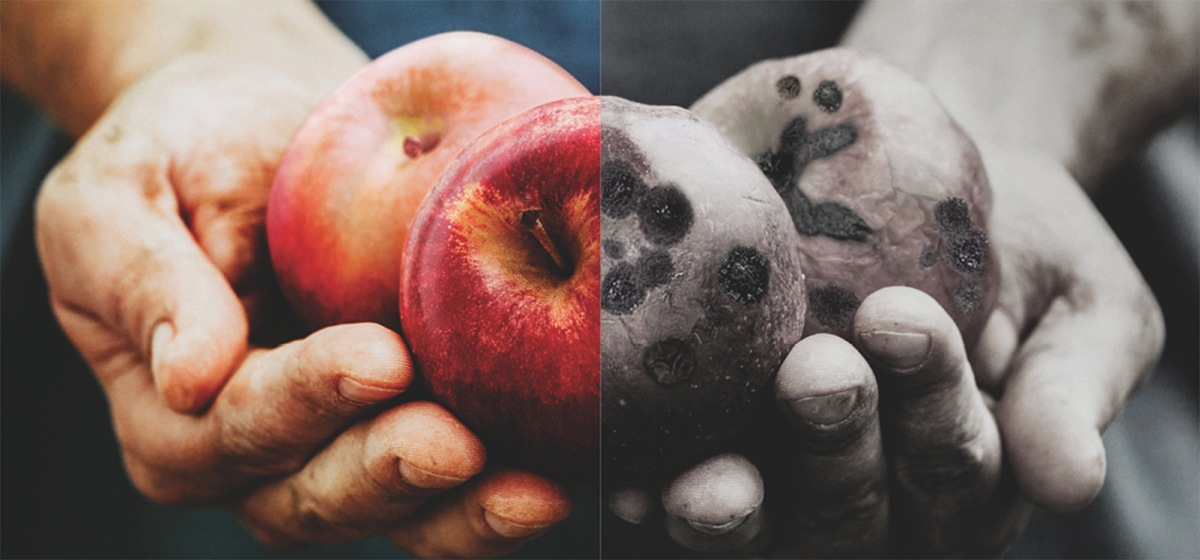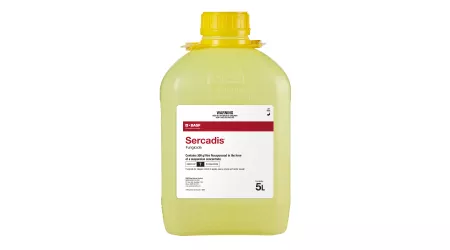Those of us who did a bit of high school chemistry probably have a head start in understanding why Group 7 (SDHI) fungicides can be so effective: they switch off the target fungi’s energy supply.
Tim Herman, Senior Technical Services Specialist for BASF in New Zealand, explains: “You may recall learning about the citric acid cycle or Krebs Cycle. It is a series of biochemical reactions that produce energy in cells. If this cycle is interrupted in some way, the cells affected cannot produce energy and die. This all happens in the mitochondria, ‘the powerhouse of the cell’.
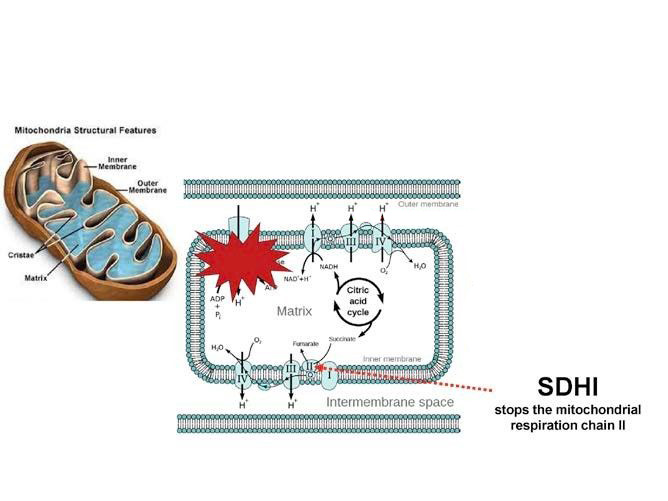
Succinate dehydrogenase inhibitor (SDHI) fungicides, as their name suggests, inhibit the function of the succinate dehydrogenase enzyme, interrupting one of the reactions within the citric acid cycle to kill the fungi they act on. By shutting down the power source in fungi, SDHI fungicides prevent spore germination, and germ tube and mycelial growth.
The first SDHI fungicide was released locally about 20 years ago, and over the last two decades the various Group 7 fungicides have become standard inclusions in spray programmes for several horticultural crops.
“Now, we’re using the third generation of SDHI fungicides, and there are about 20 different Group 7 fungicides registered for use globally,” says Tim. “Keeping in mind the need to rotate fungicide groups for resistance management, you can only use the chemistry from each Mode of Action group two or three times on each crop. It makes sense to be selective and make sure you’re using the most effective and appropriate active ingredients from each group.”
“Many onion, pipfruit and winter squash growers know from personal experience that Sercadis is a standout choice among the SDHIs. It controls of a range of pathogens in numerous crops and can be trusted to perform well even under adverse conditions. With locally systemic and translaminar activity, it also provides some protection of new foliage emerging up to three weeks after its application.”
Looking forward to the 2024-25 season, the first use of Sercadis will be in onion crops where it is has become a standard part of spray programmes to control white rot. Small plot trials (Graph 1) showed it to be very effective against the white rot pathogen, Sclerotium cepivorum, and these results have been replicated in both Fruitfed Supplies trials and commercial crops.
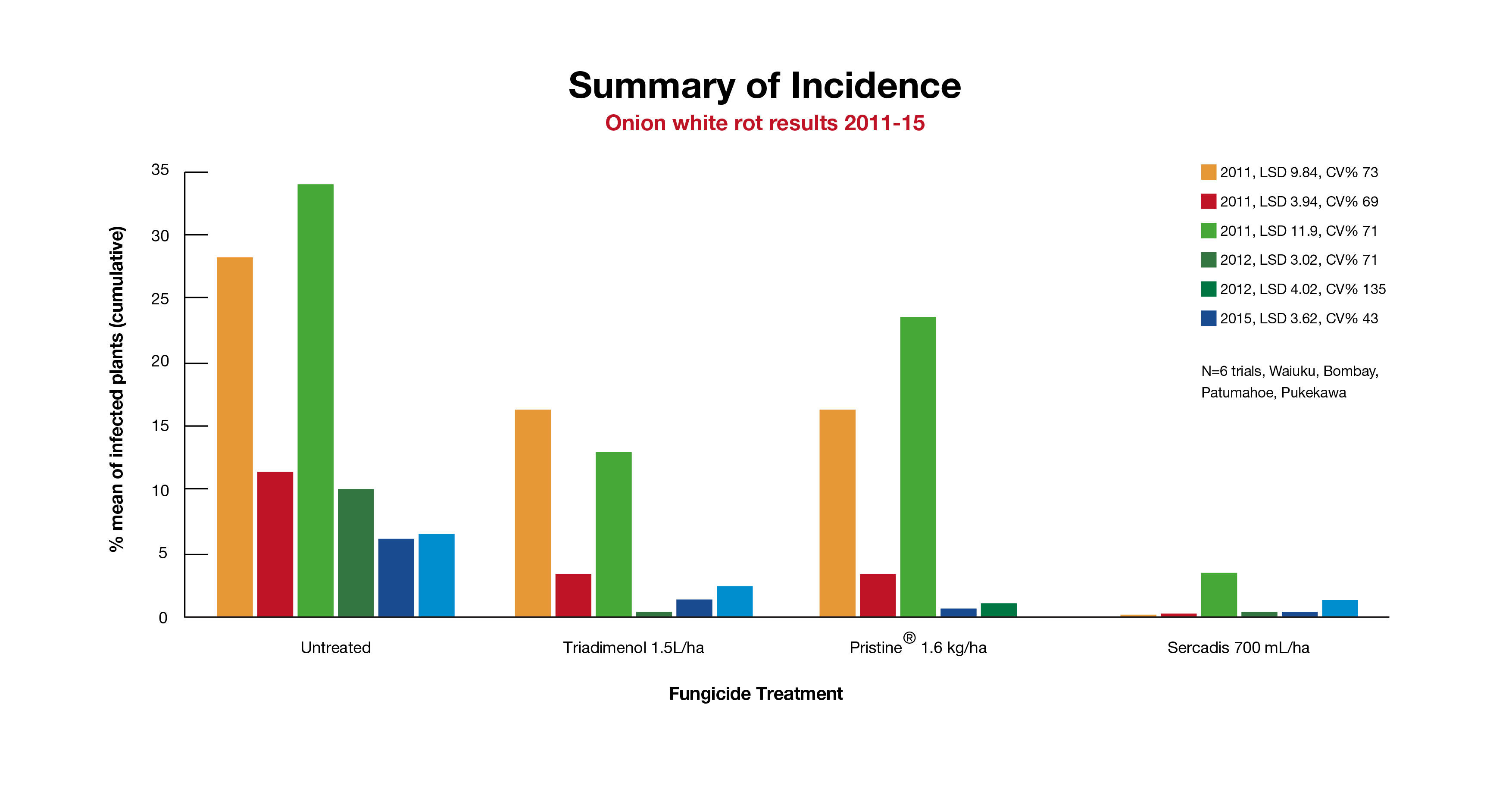
Tim says that when used in a programme with other fungicides from the DMI and QoI mode of action groups, Sercadis is a great tool for onion white rot control. “That’s assuming that all the spray applications are made at the most strategic timings. The ‘white rot degree days’ prediction model, which measures average soil temperatures to anticipate the level of disease threat by calculating the number of cumulative degree days in the life of the crop, sets the optimum timing for a first spray at 100-150 degree days after planting.”
For resistance management, a maximum number of SDHI fungicide applications are recommended for each crop. The maximum number of applications is proportional to the total number of fungicide applications made each season. Note that for onions one of the SDHI applications may be as a seed treatment.
Sercadis is also a popular option to prevent black spot in apples and pears. As the growing season progresses, many pipfruit growers will use Sercadis at an appropriate time in their spray programme. For apple growers, it’s helpful that the product also controls powdery mildew and it’s also proved its worth as a powdery mildew treatment in winter squash.
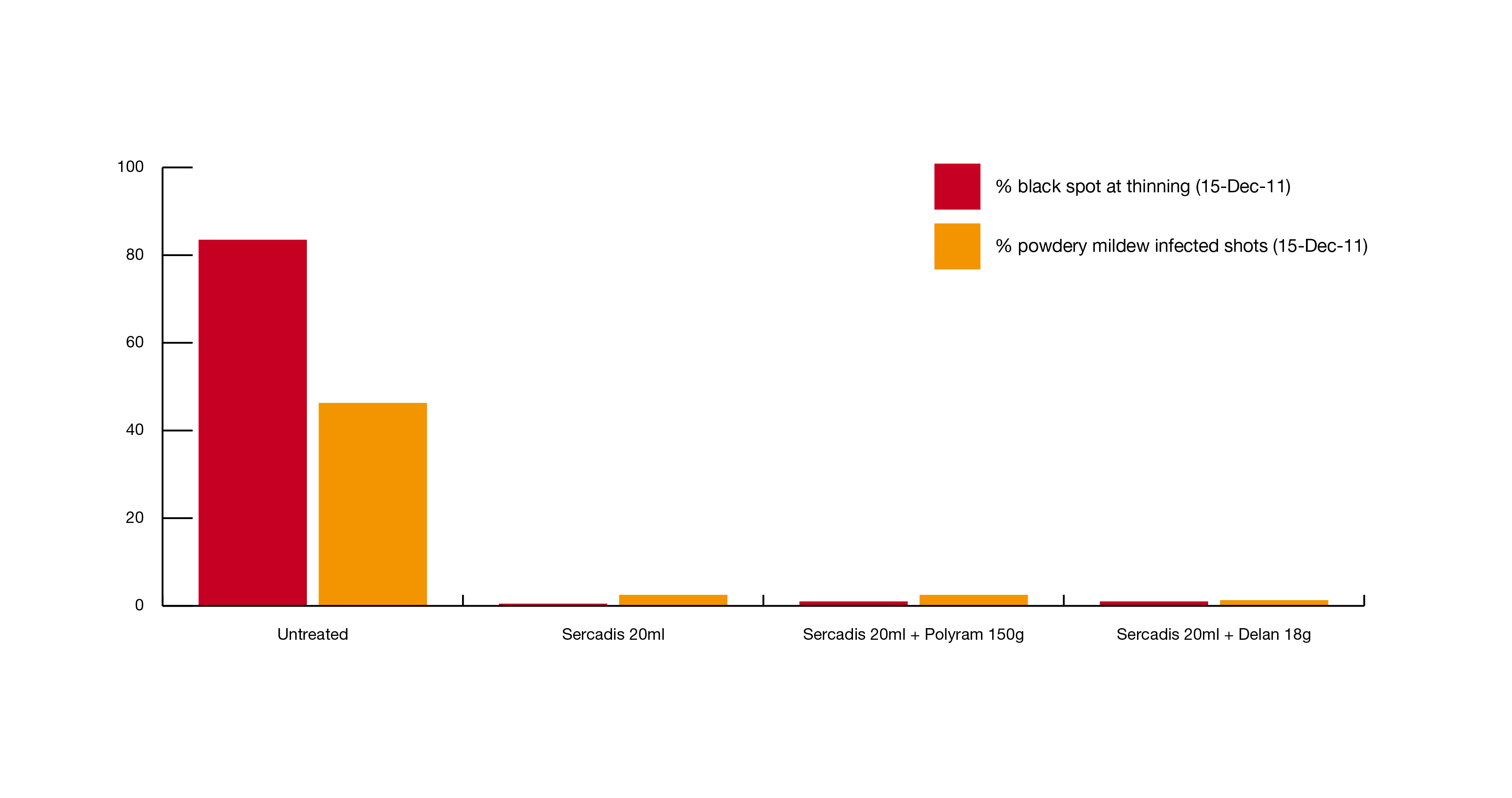
In all four registered crops, Sercadis shows how far SDHI chemistry has come over 20 years. More efficient and robust than earlier formulations with the same basic mode of action, Sercadis delivers maximum impact whenever it’s used as part of a well-planned programme.
Talk with your BASF Horticulture Specialist for more information about Sercadis for use in onions, pipfruit and squash crops.
ACVM registration number: Sercadis® #P008977. Read the registered label before use.
Trial reference: Fruitfed Supplies Technical Reports FSEXP91314-18 and FSEXP51516-22
